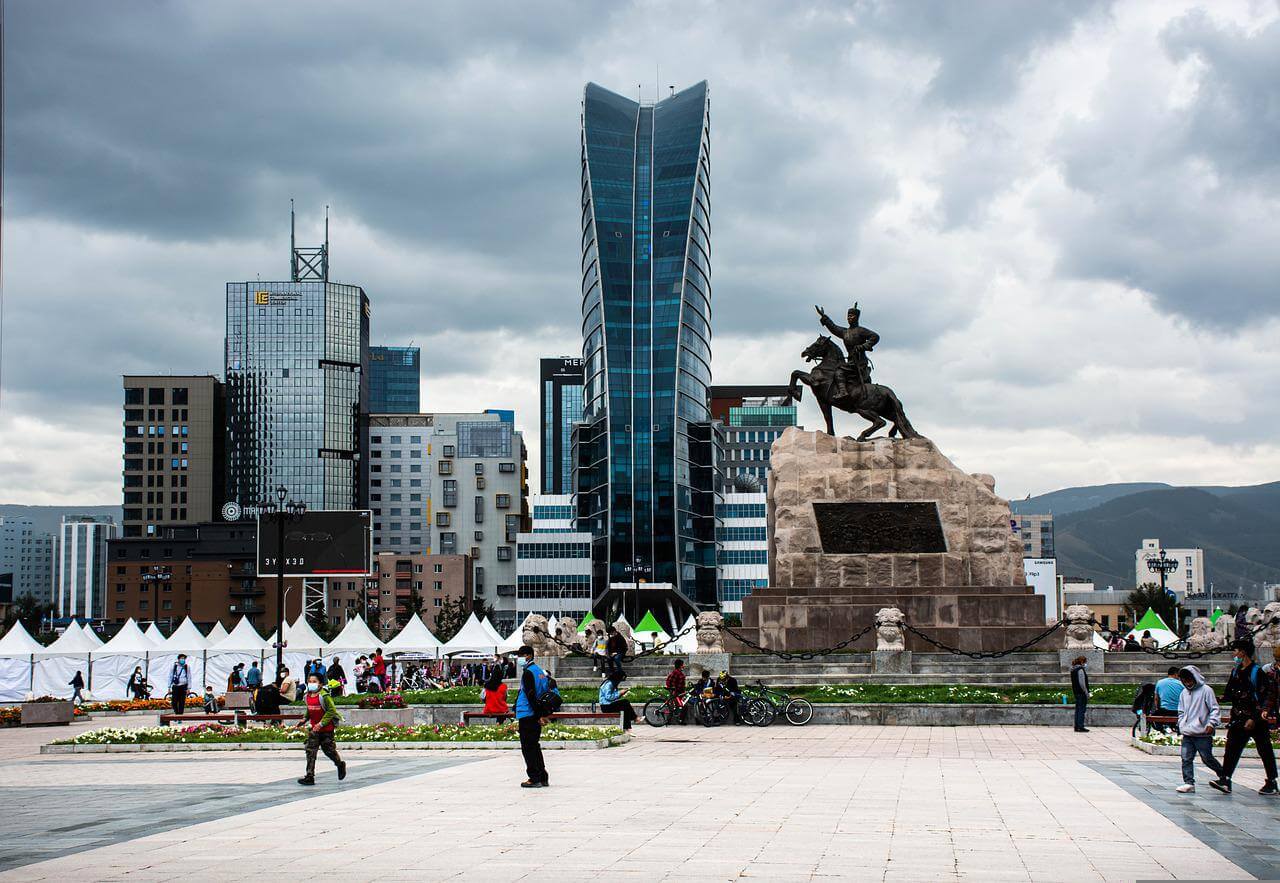Mongolian theatre has continuously changed throughout the years as Mongolians have transitioned from a nomadic civilization to a modern one. However, if we look back at its earliest days, there are performative aspects present in ancient hunting dances and religous rituals. Even worshiping nature showed early signs of theatrics.

All of these behaviors helped lay the foundations for modern Mongolian theatrical art. But with Mongolia’s historic shift to a market economy and democratic society, the nation’s approach to the arts changed.
The flourishing of ballet and classic music development in the 1970s and 1980s was indeed a unique stage in the history of the national arts. During these time Mongolian State Academic Theater of Opera and Ballet was founded.
The Mongolian State Academic of Theatre of Opera and Ballet is a beautifully pink and white building with columns that faces Sukhbaatar Square.
The State Academic Theater of Opera and Ballet was created on May 15, 1963 by the Central Committee of Mongolian Public Revolution Party with the goal of “bringing culture to the Mongolian people”. In its more than 50 years that library has grown to over 100 national and international classical works including 56 ballets (along with several Mongolian ballet productions) and 54 operas.

The operatic repertoire include world classic operas such as
- Mozart’s Don Giovanni and The Magic Flute,
- Donizetti’s Lucia di Lammermoor, Puccini’s Turandot, La Bohème, and Tosca,
- Verdi’s La traviata, Aida, and Rigoletto, Bizet’s Carmen,
- Rossini’s The Barber of Seville and Otello, Gounod’s Faust,
- Borodin’s Prince Igor, and Tchaikovsky’s Eugene Onegin,
as well as Mongolian operas such as
- B. Sharav’s Chinggis Khaan,
- Kh. Bilegjargal’s Tears of Lama,
- B. Damdinsuren’s Strife,
- D. Luvsansharav’s Bare Truth and Khara Khorum,
- D. Janchiv’s Blue Silk Deel
- Ts. Natsagdorj’s Ogodei Khaan.
The ballet repertoire include
- Tchaikovsky’s Swan Lake and The Nutcracker,
- Shostakovich’s The Limpid Stream,
- Pugni’s La Esmeralda, Gounod’s Walpurgisnacht,
- Asafyev’s The Fountain of Bakhchisarai,
- Adam’s Giselle and Le corsaire, and
- Prokofiev’s Romeo and Juliet and Zolushka,
as well as many Mongolian ballets including
- S. Gonchigsumlaa’s Khoshuu Naadam,
- B. Damdinsuren’s Lake Legend,
- Ts. Natsagdorj’s Guyug Khaan,
- A. Batdelger’s Geser Nomun Khaan, and
- Z. Khangal’s Treasure Girls.
Currently over 270 artists, staff and administrators from around the world are serving the Mongolian people with classical opera, ballet and music.
Related Content:
Ulaanbaatar The Best 12 Places for Travelers
Share to Public

